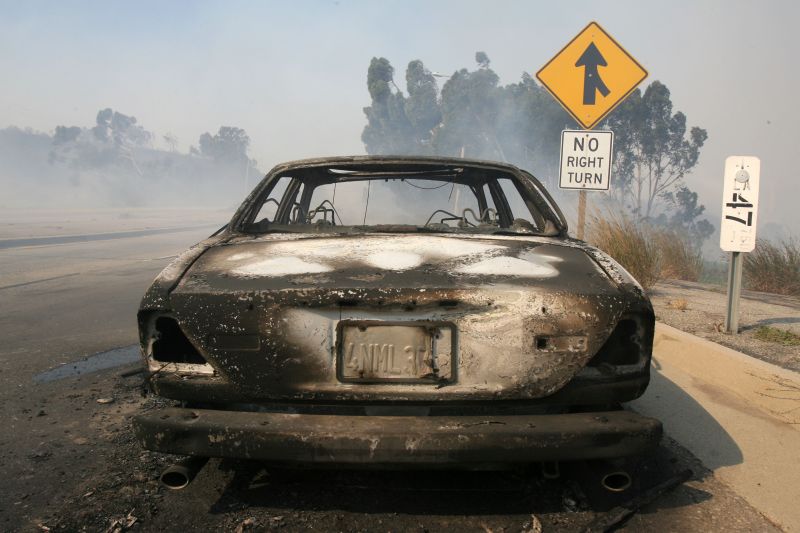
In December, a three-month-old Tesla spontaneously caught on fire while at a repair shop for a flat tire. Six hours later, after the fire was finally extinguished, the car burst into flames again.
Car fires are more common than you think, though it’s highly unusual your car will light up twice in a single day. Between 2014 and 2016, FEMA reports there were an estimated 171,500 of them and many the result of a mechanical or electrical issue, like an overheated engine.
Advertisement
This week, Consumer Reports covered the safety basics of car fires. If it isn’t already obvious, you shouldn’t be anywhere near a vehicle on fire, but it’s also important to know how to prevent a fire before it occurs.
Advertisement
If you have a gas car, look out for rapid changes in fuel or oil
If you drive a gasoline-powered car, it’s important to look out for any rapid changes in fuel or oil levels or extreme temperature changes, which may indicate a leak (and increase the odds of a fire). The National Fire Prevention Association also recommends against transporting gas in the passenger compartment of any vehicle unless it’s a small amount and in a certified, sealed gas can. You should also be on the alert for any odors that smell like burning plastic or rubber, as its source might trigger a fire.
Advertisement
If you have an electric car, be sure to update the software regularly
For those who drive electric cars, the single easiest way to prevent any safety issue is to check for any software updates and install them immediately, particularly if you read news of issues with your particular vehicle. (Tesla recently rolled out battery updates after a string of other, recent fires.) Tesla has also allowed customers the option of setting up automatic software updates; just go to “Settings,” “Software,” “Software Update,” “Advanced,” and opt in.
Advertisement
As Consumer Reports writes, seeing a mechanic regularly will also help curb any possible fire hazards.
What to do if your vehicle catches fire
If your engine does start fuming—or you smell burning rubber—you should pull over immediately and turn off the engine to stop the flow of fuel. Do not stop to grab any personal possessions and be careful not to open the trunk or hood, which may only worsen the fire with more air exposure. (NFPA recommends disconnecting any proximity key or moving it at least 16 feet away from the vehicle, which may trigger the car to start.)
Advertisement
You should move at least 100 feet away from the car, caution anyone in the immediate vicinity, and stay clear of moving traffic. Ideally, if you’re parked on the side of the road, you’re far back enough that any possible collision with your vehicle won’t injury you or anyone around you—again, stay clear of active traffic.
If you still have your phone, you should call 911 or have another driver make the call. If you have an extinguisher on hand, you should not put out the fire unless you have direct access to the fire and know how to operate the extinguisher. (As Consumer Reports writes, you should only use an extinguisher intended for Class B or C fires, used for flammable liquids or live electrical equipment; a Class A extinguisher, intended for fires with wood, paper or plastic might not be effective.)
Advertisement
Electric cars have batteries that remain hot well after a fire is already extinguished. As we’ve mentioned, they can also re-ignite, meaning you do not want to touch the battery (or try to drive it) under any circumstance.
Whatever you do, it’s essential to remember to keep far away from any ignited car until emergency services arrive on the scene; remain at a safe distance and caution those around you to do the same.
Advertisement













